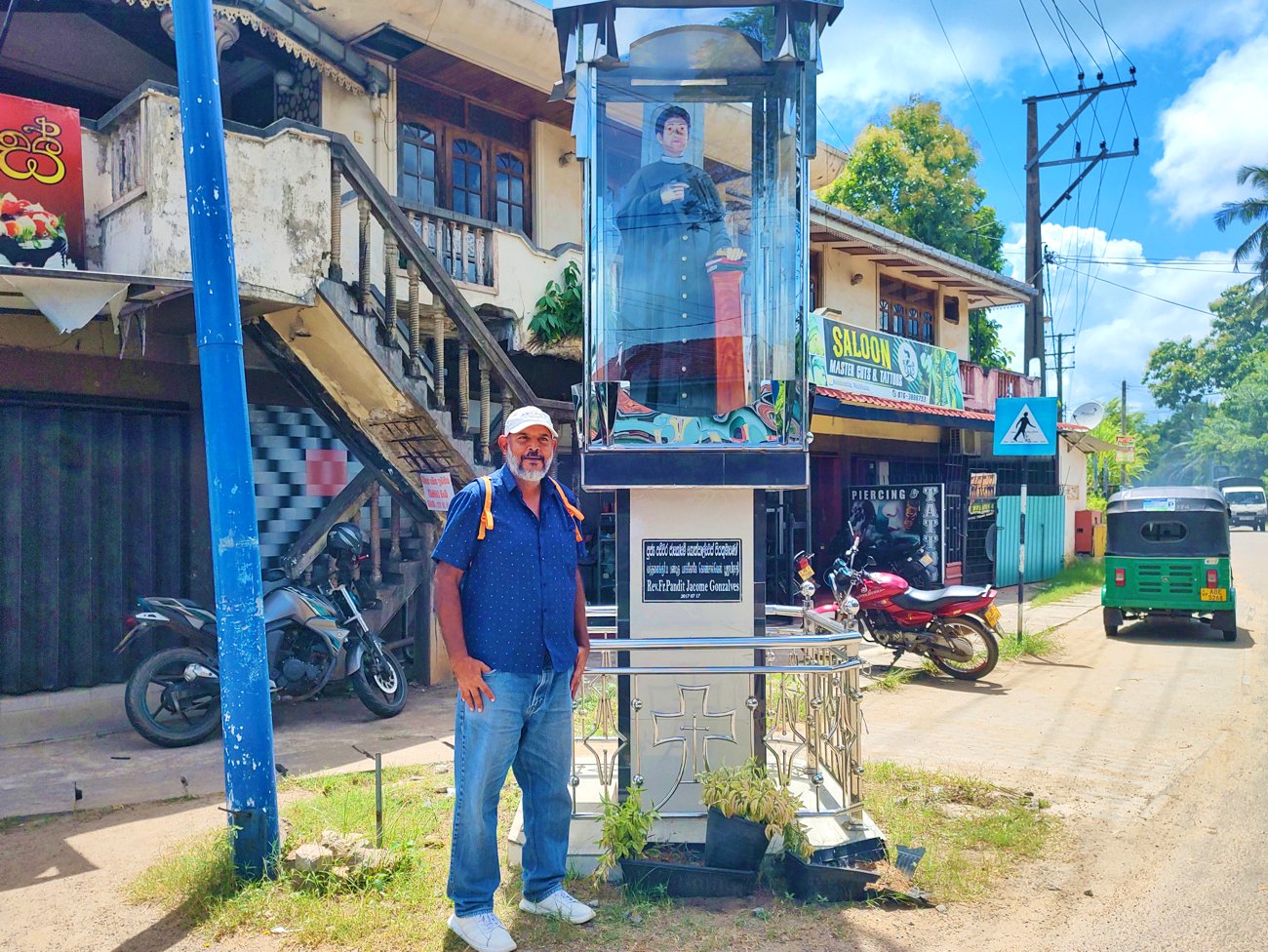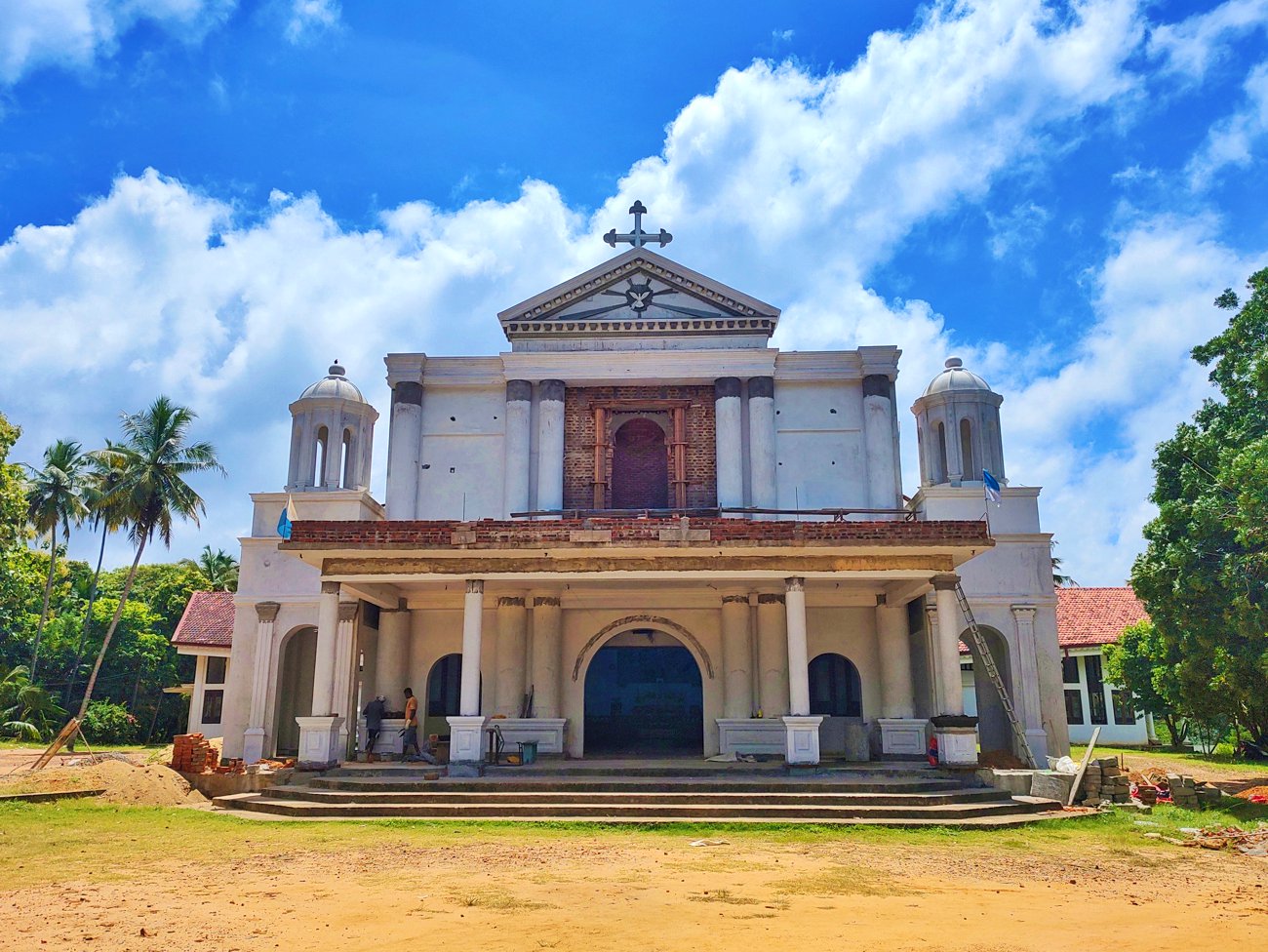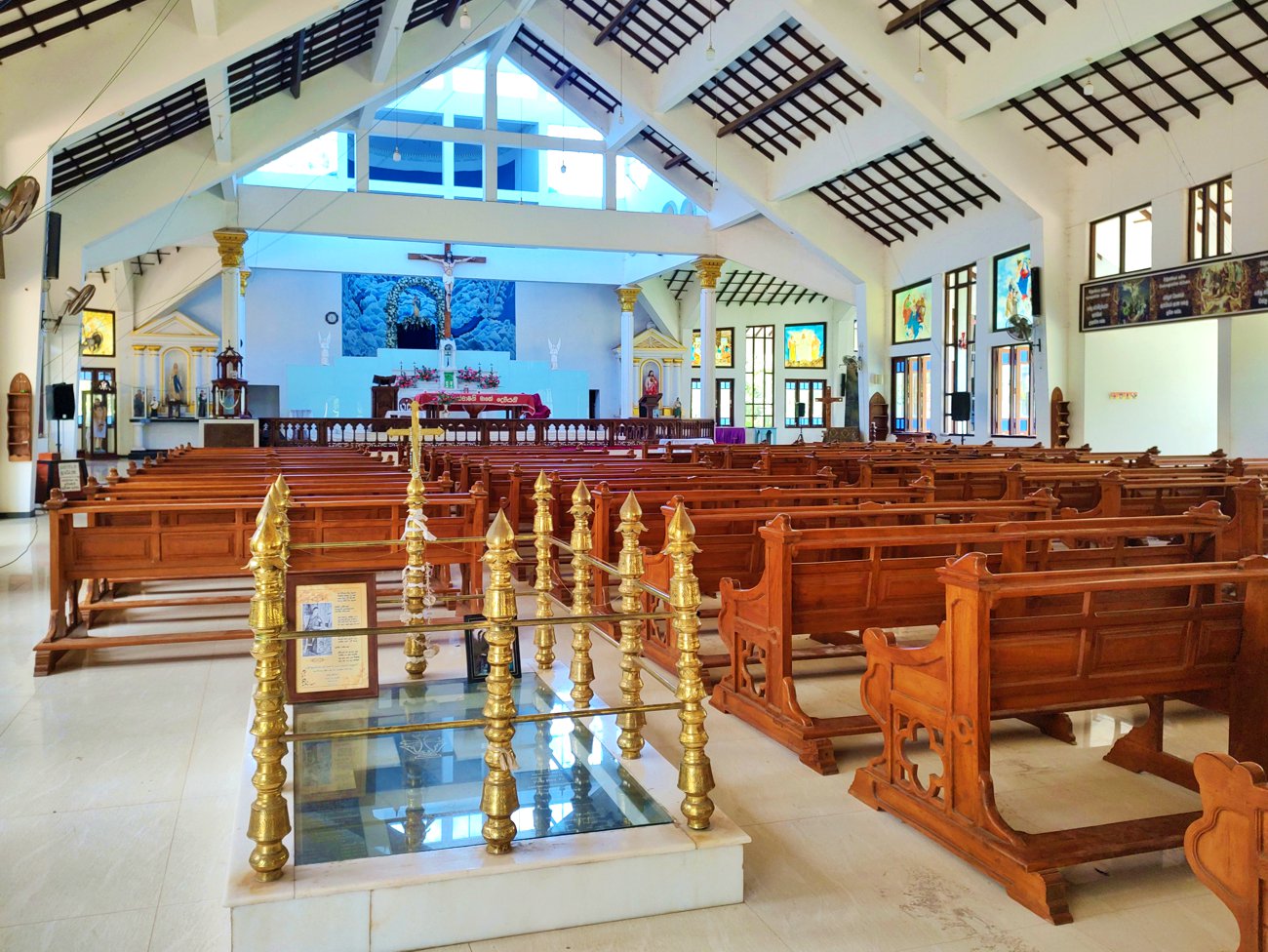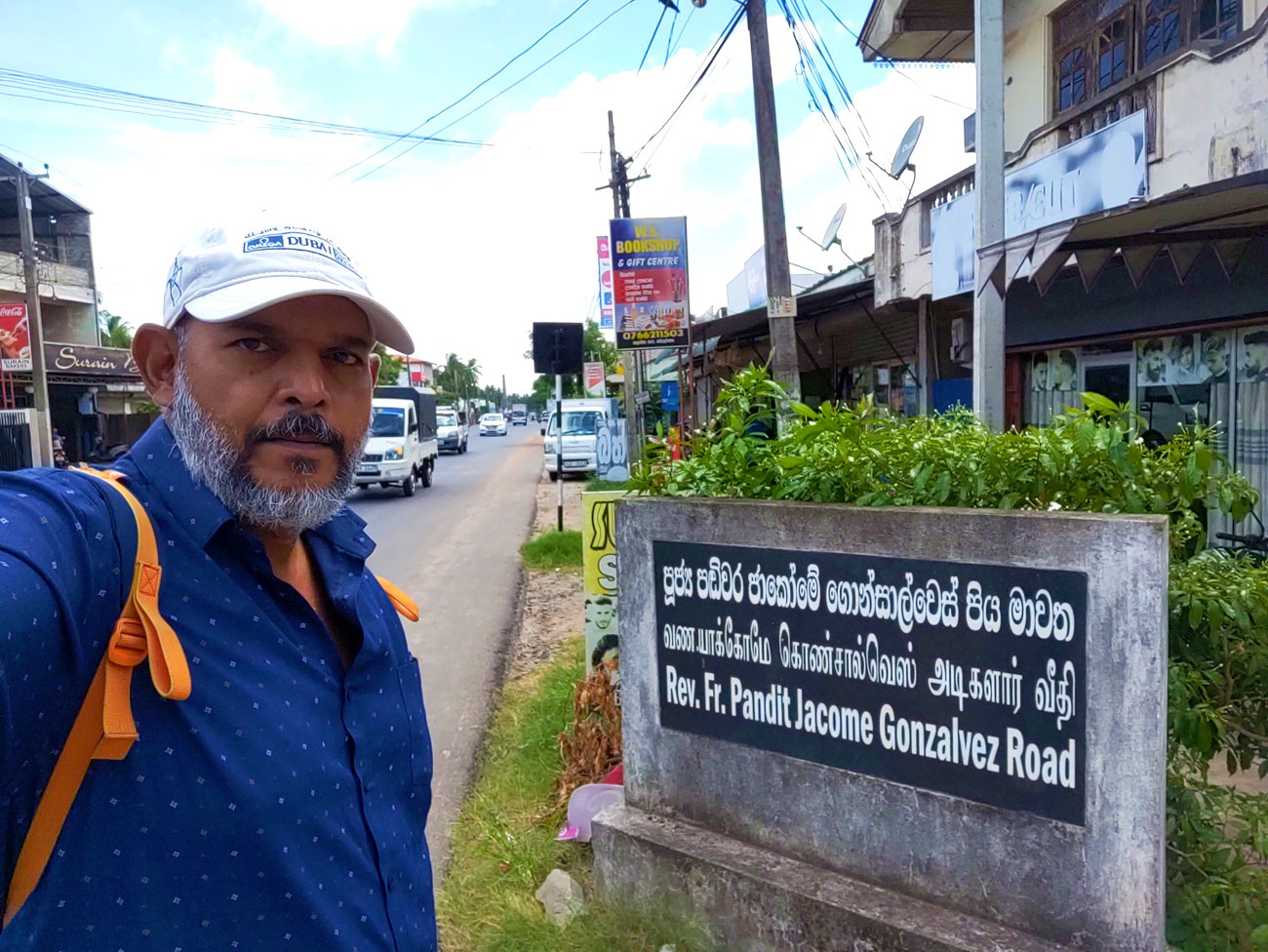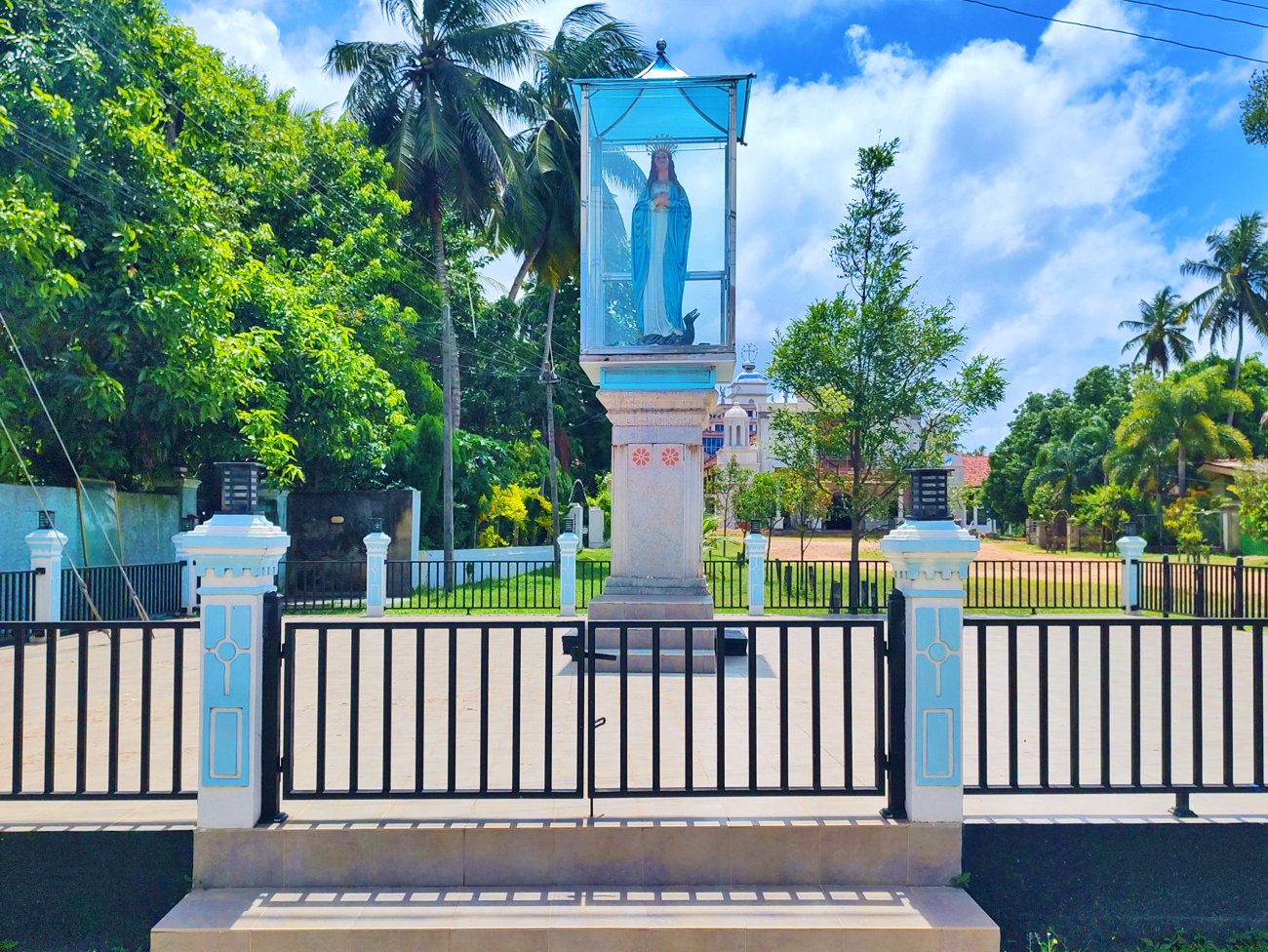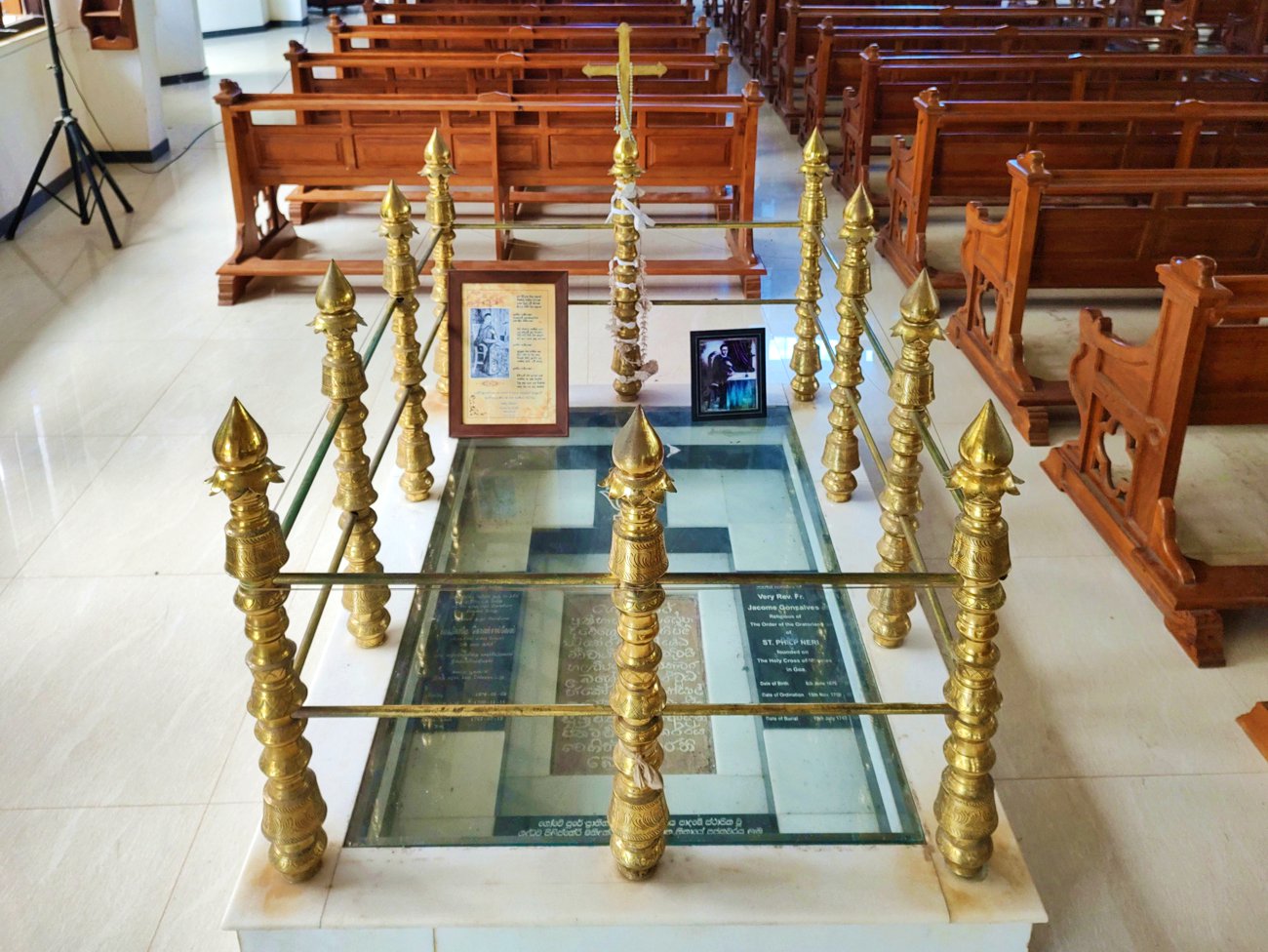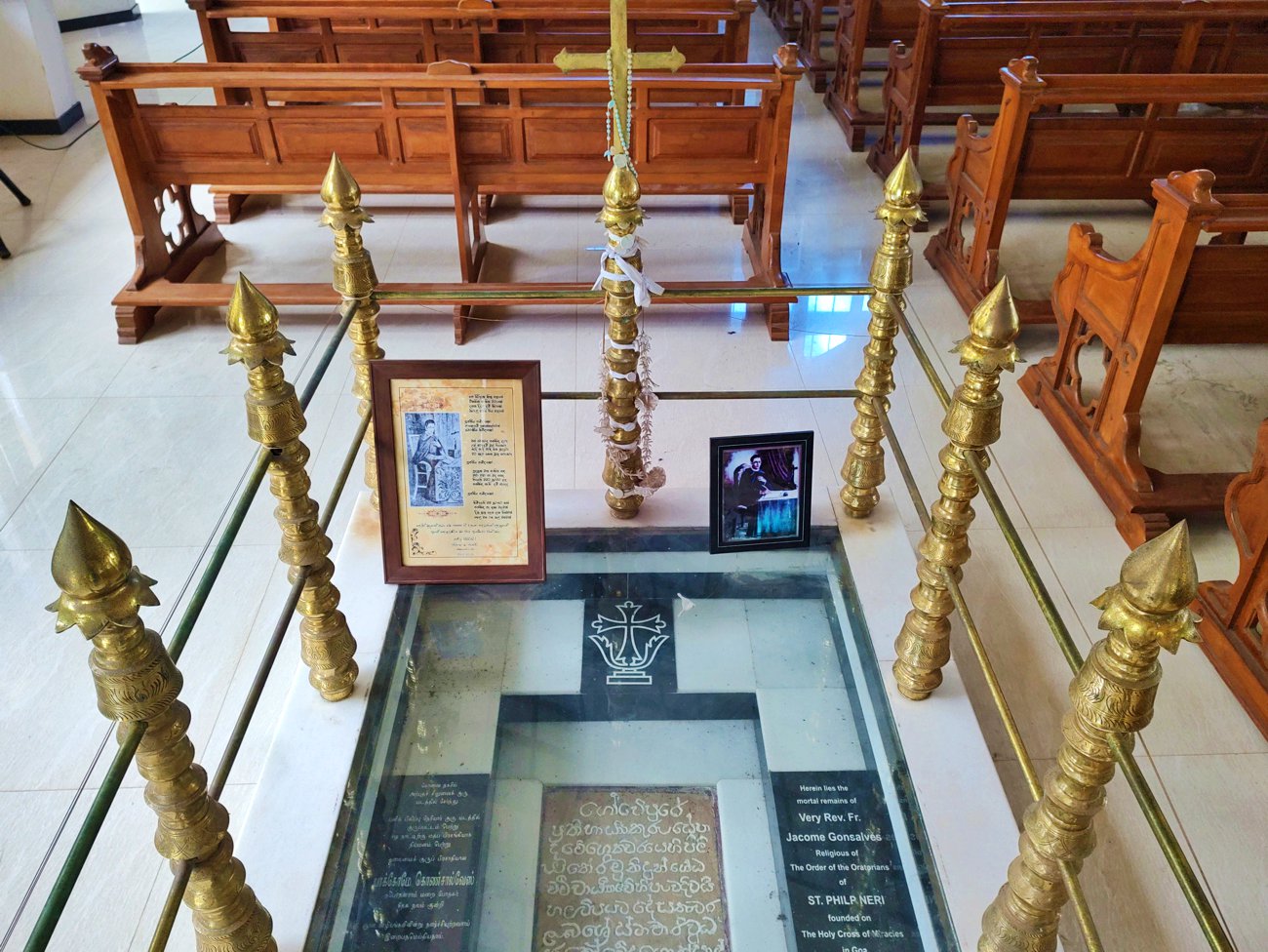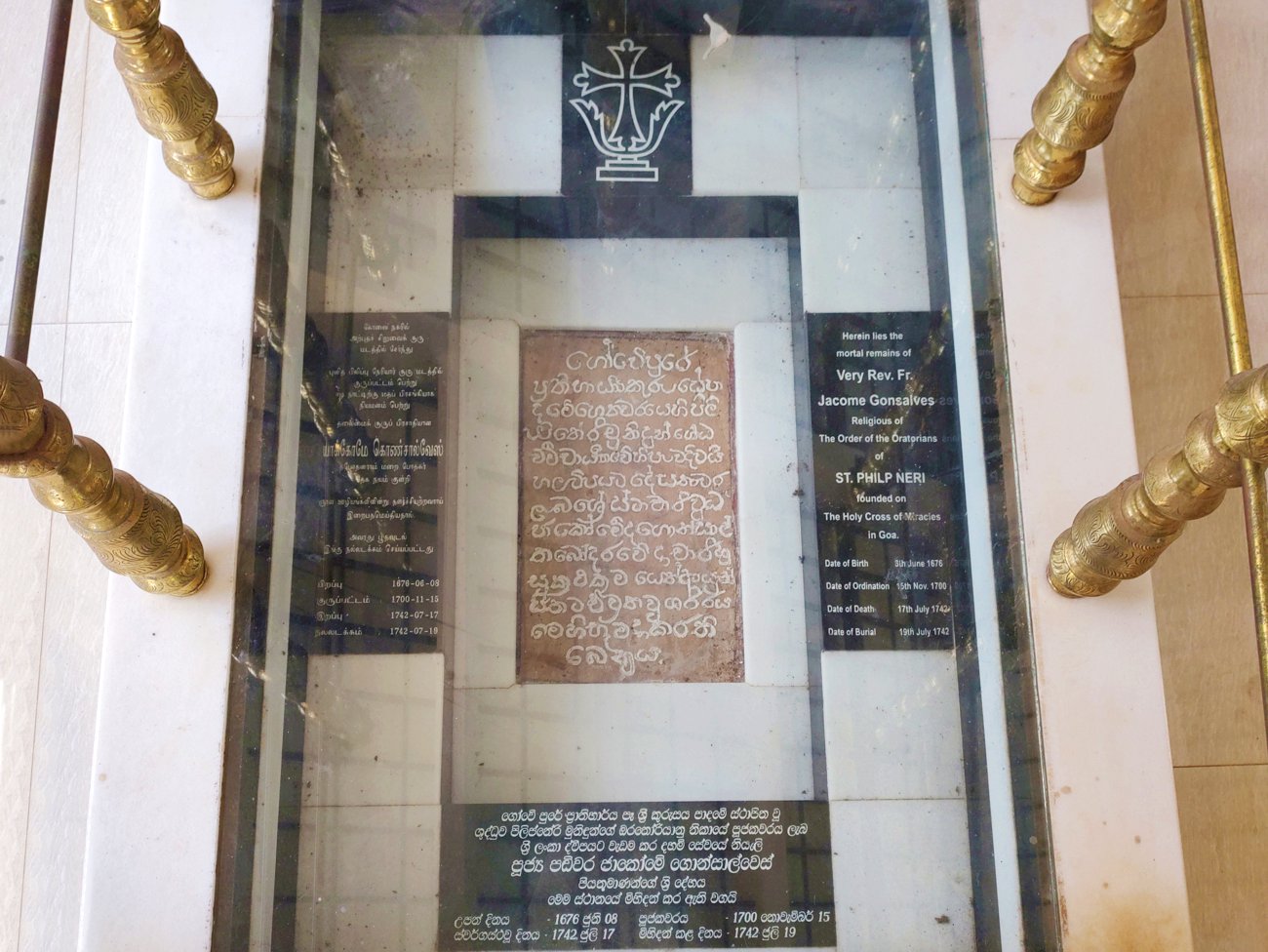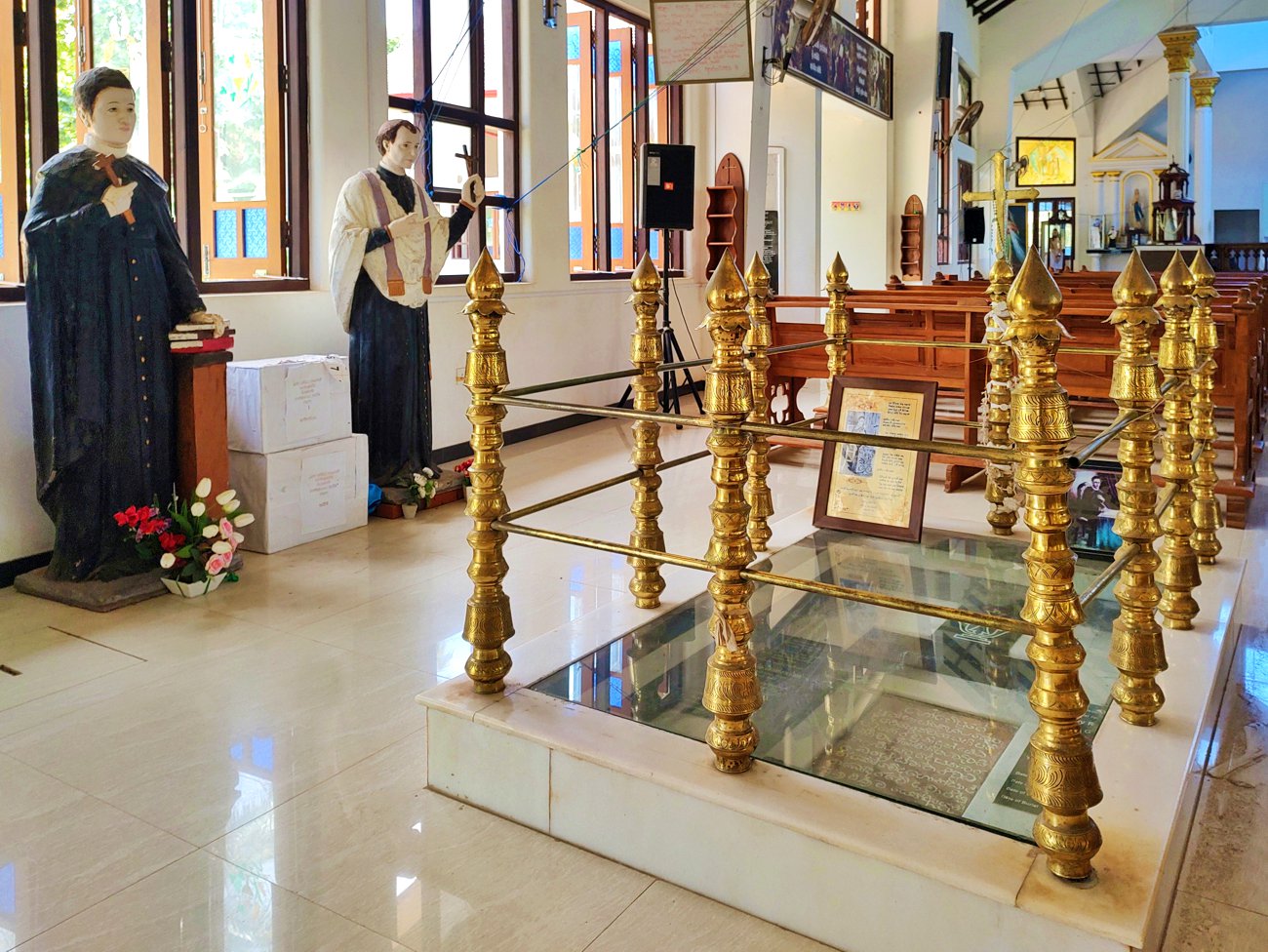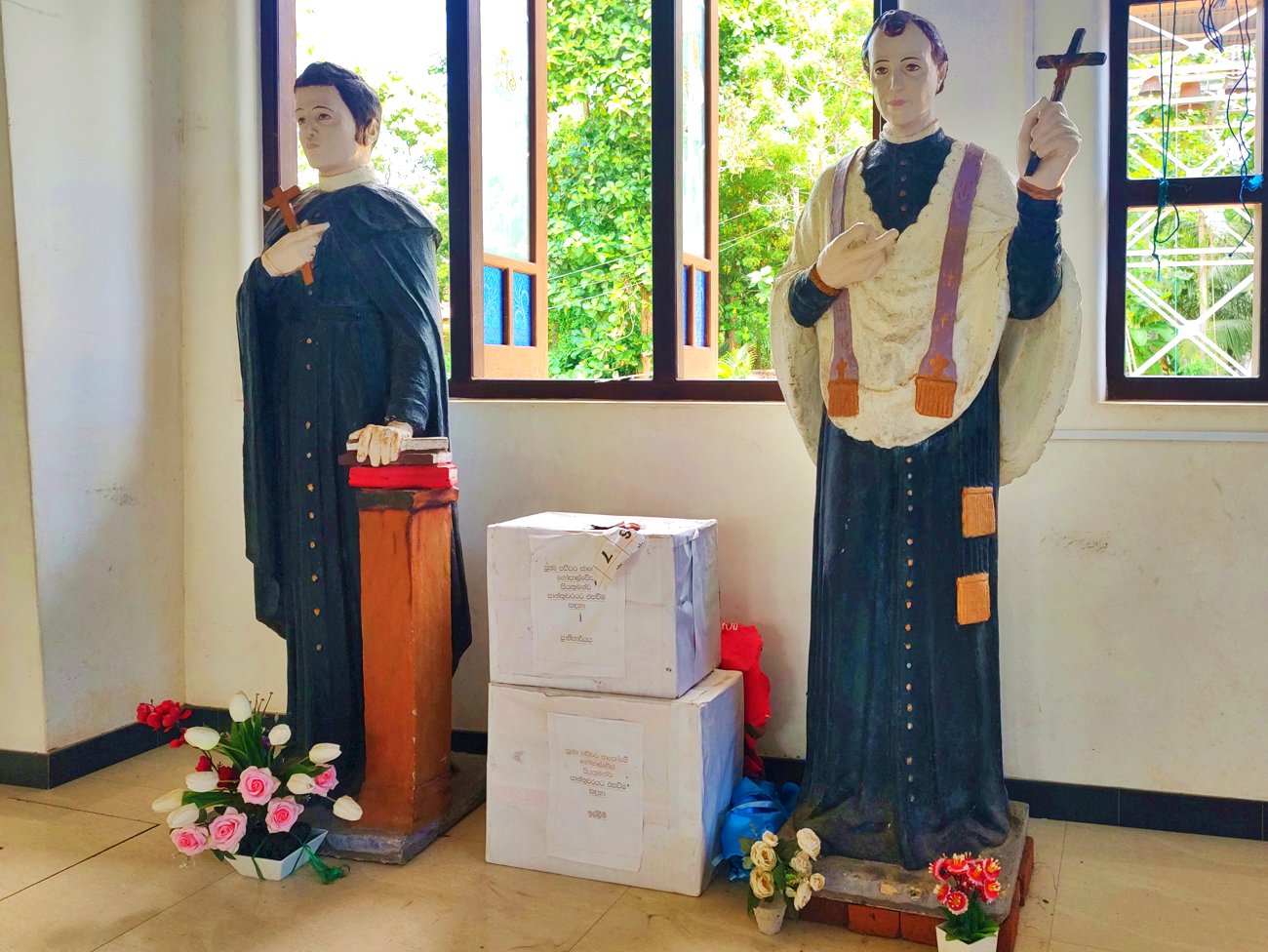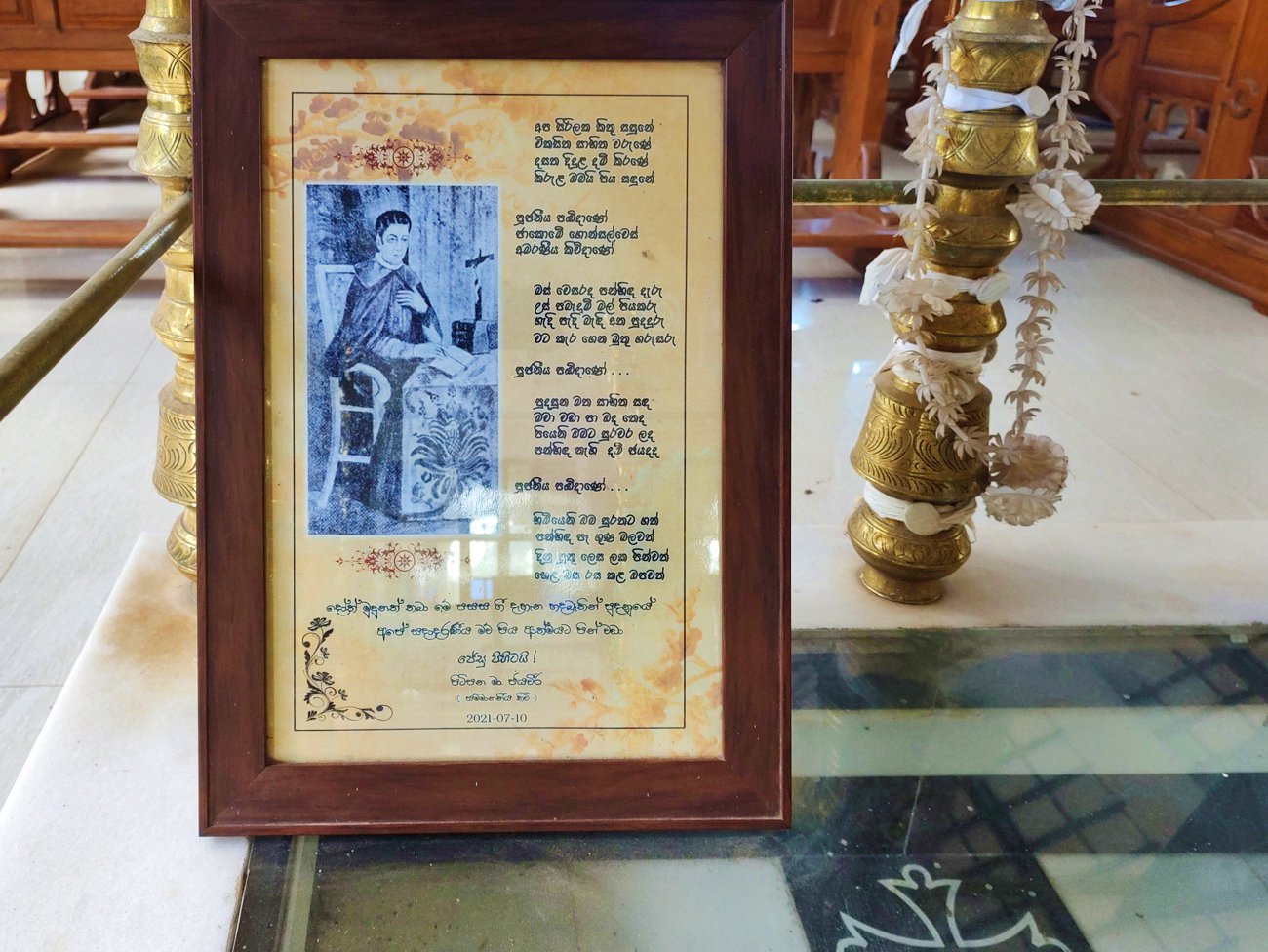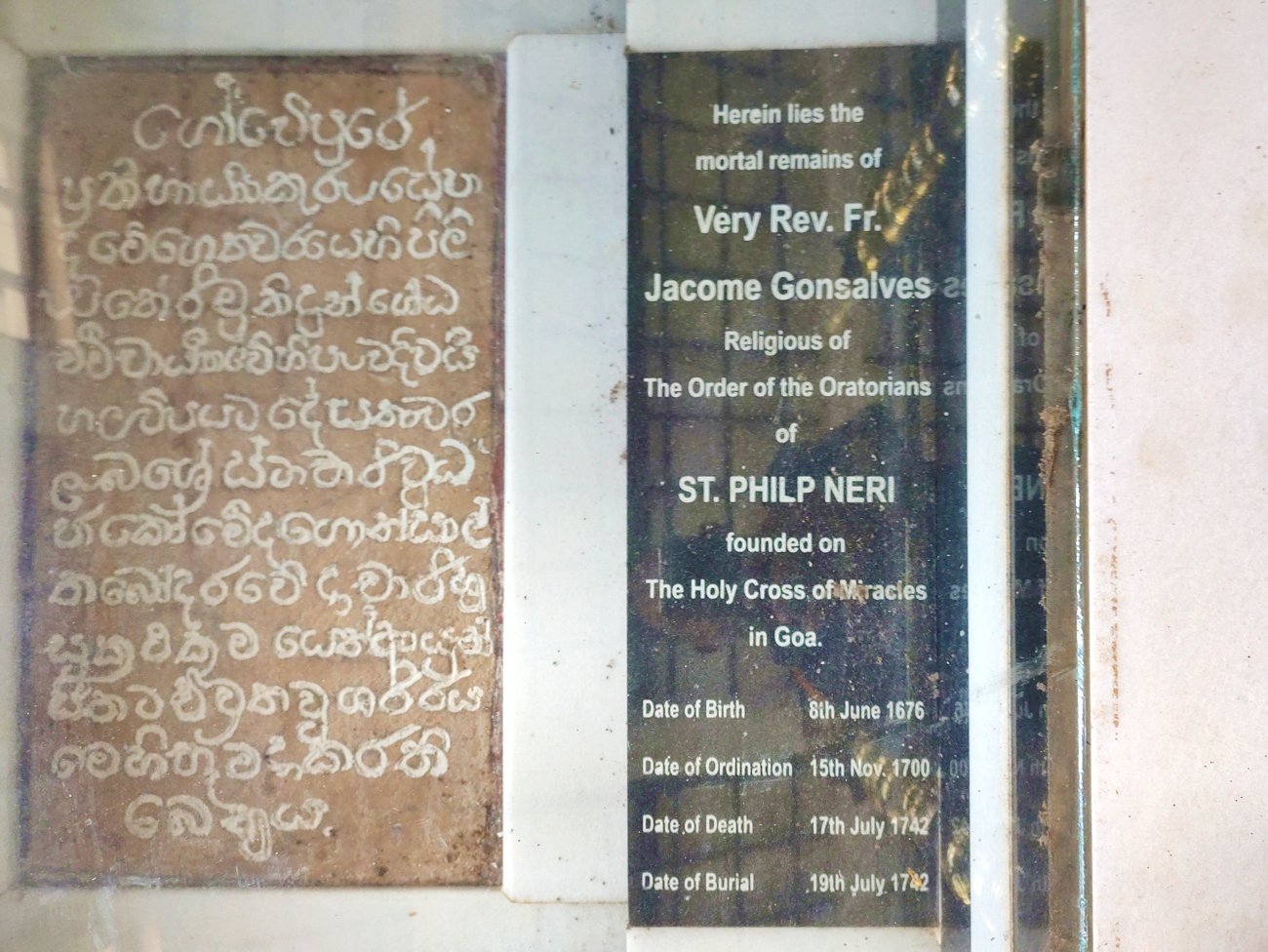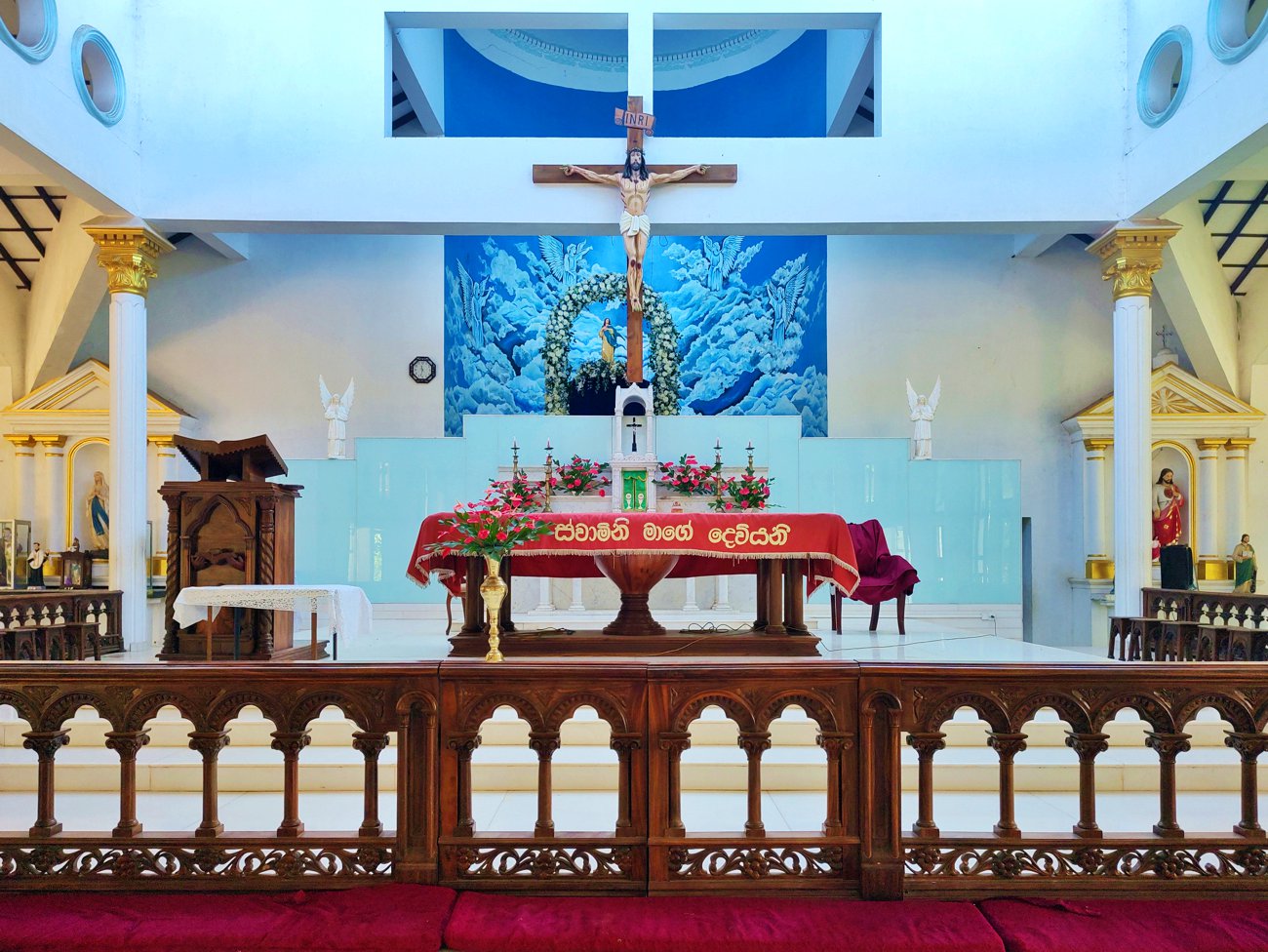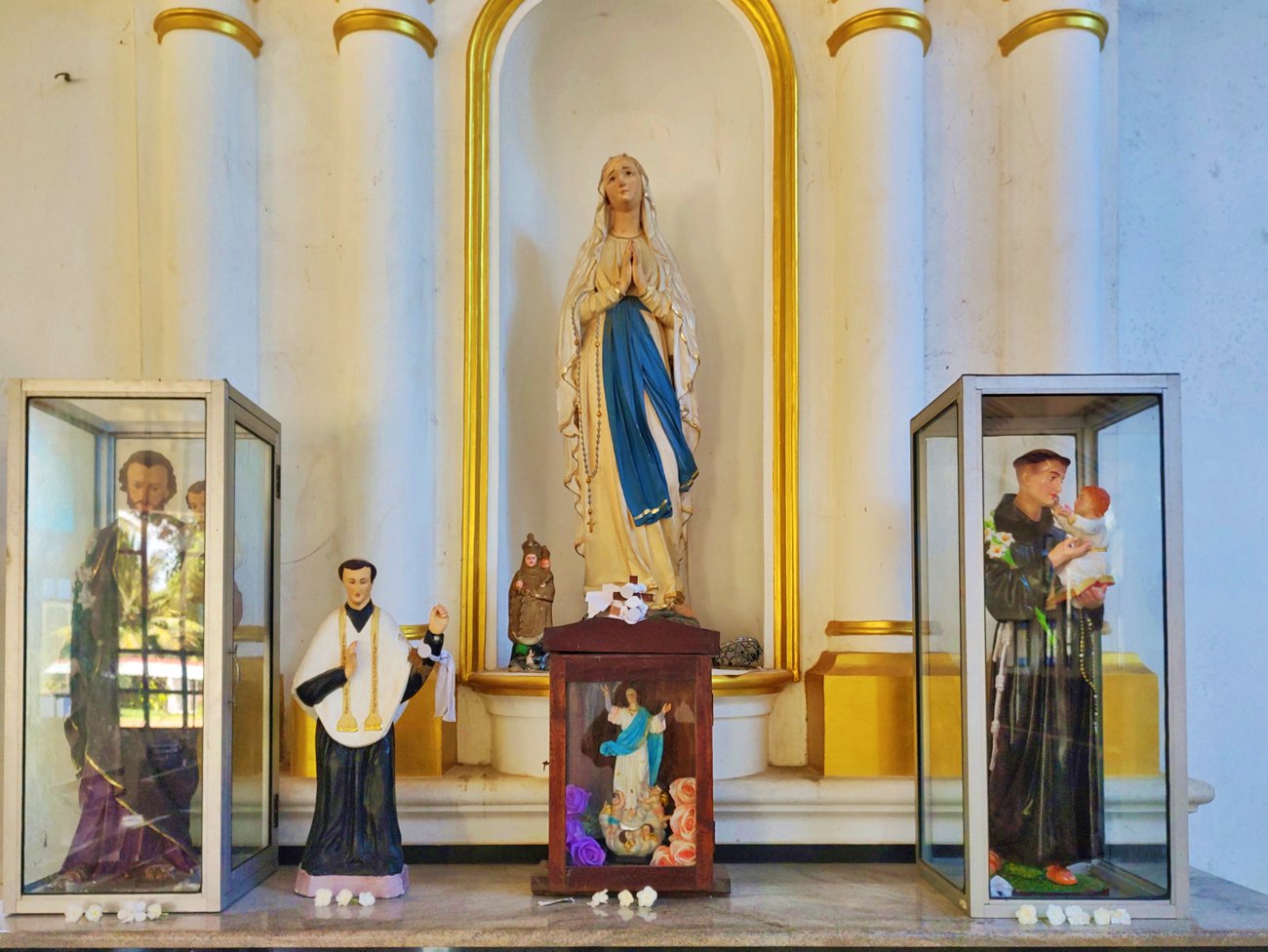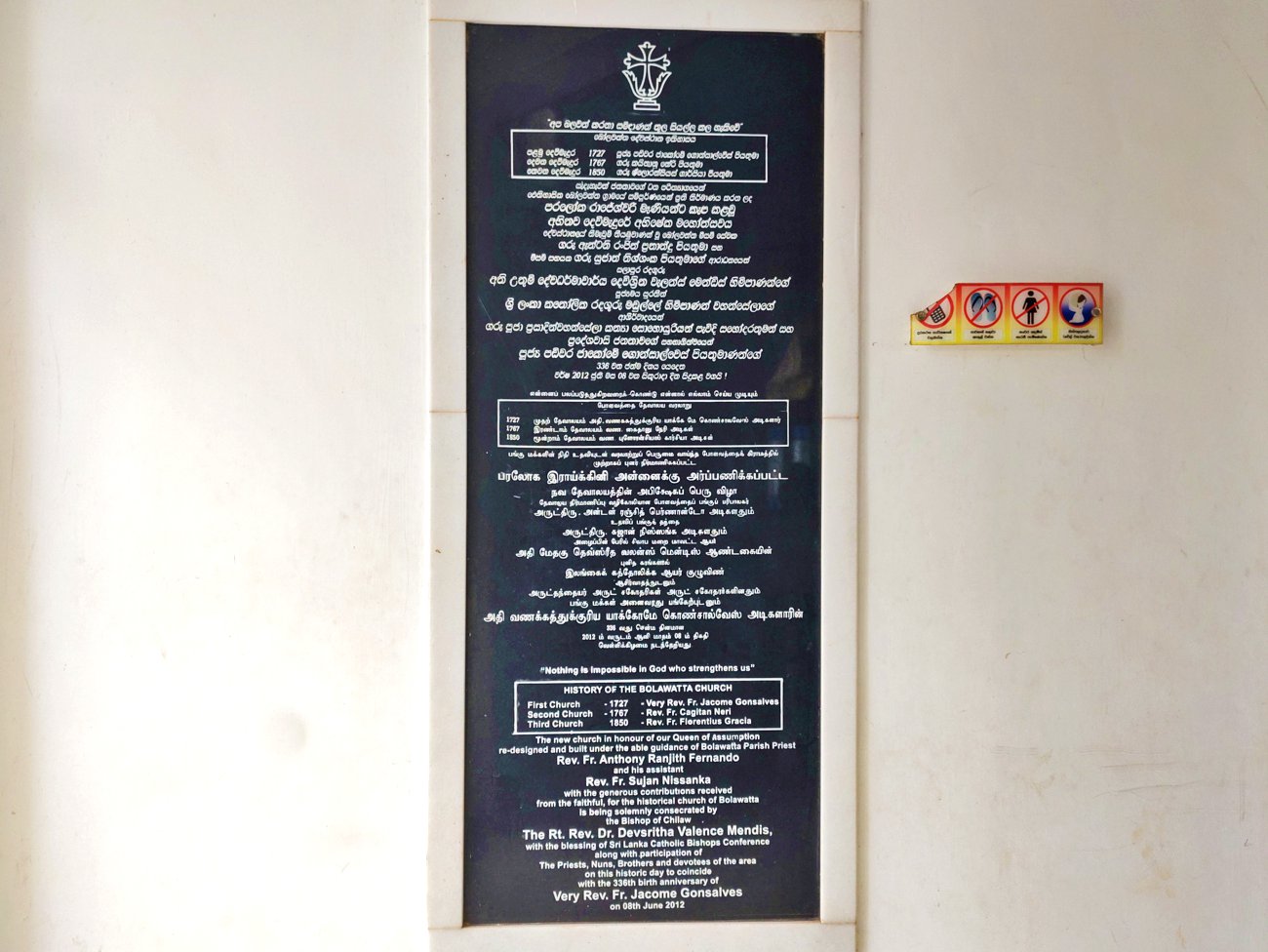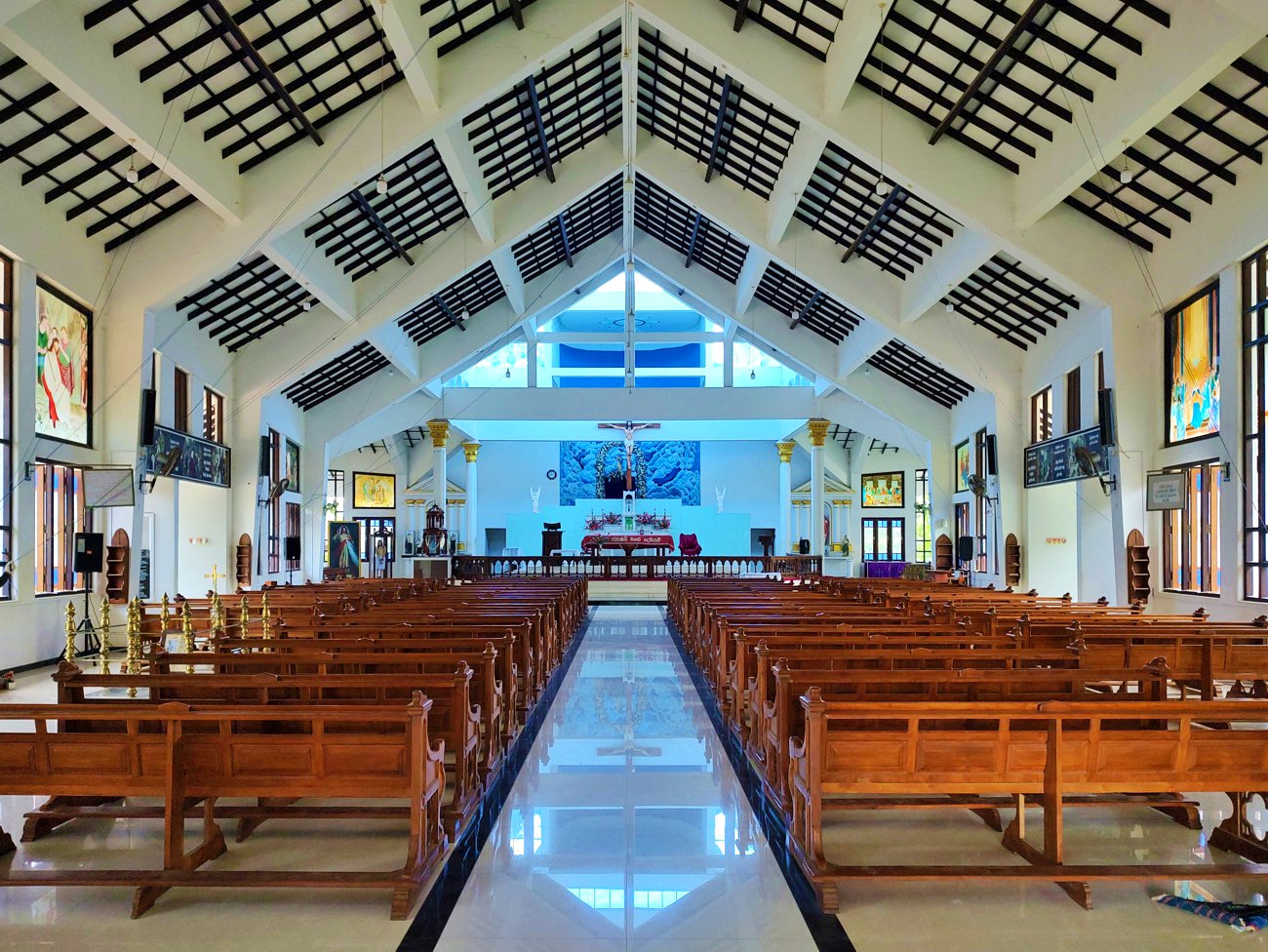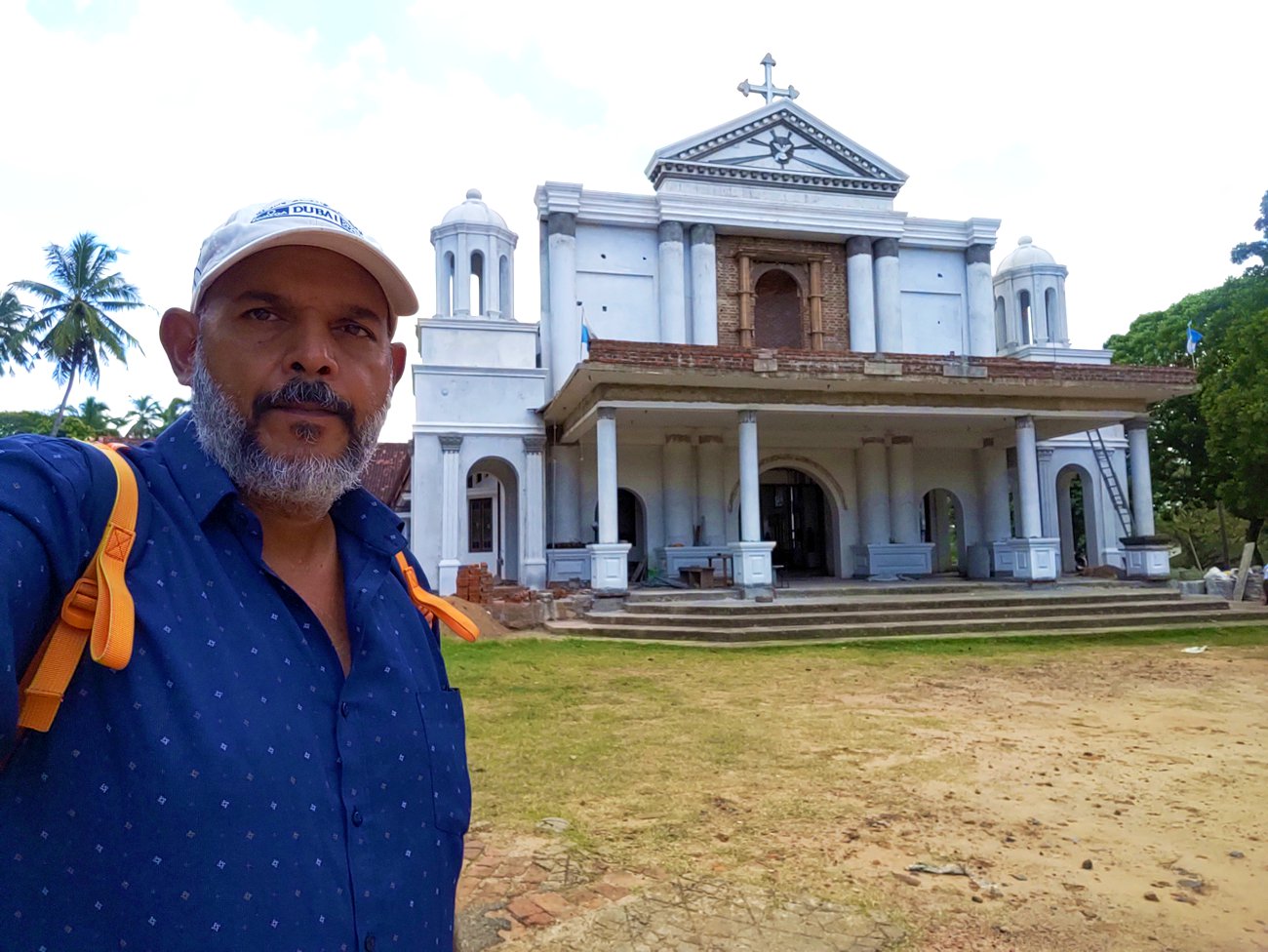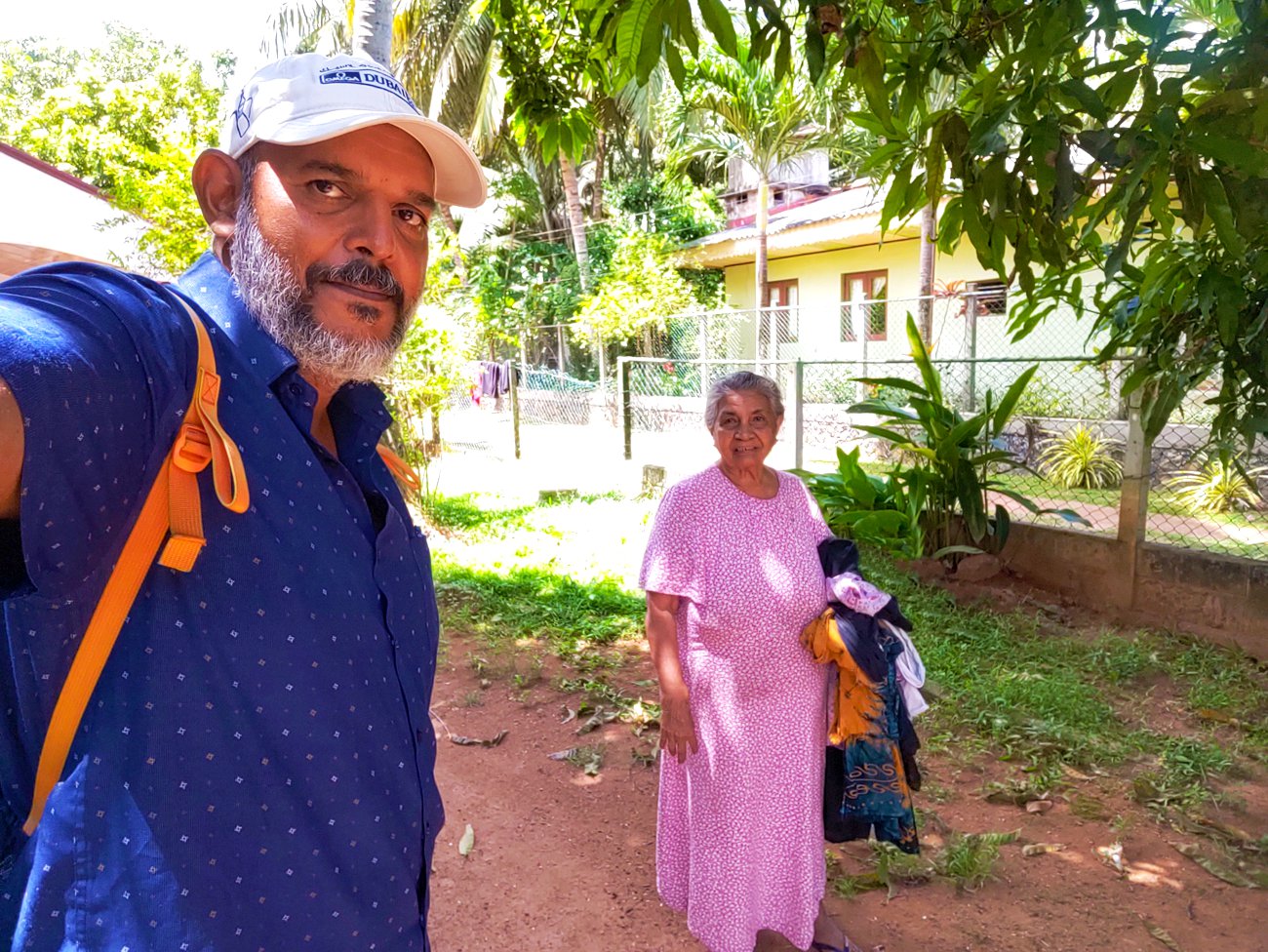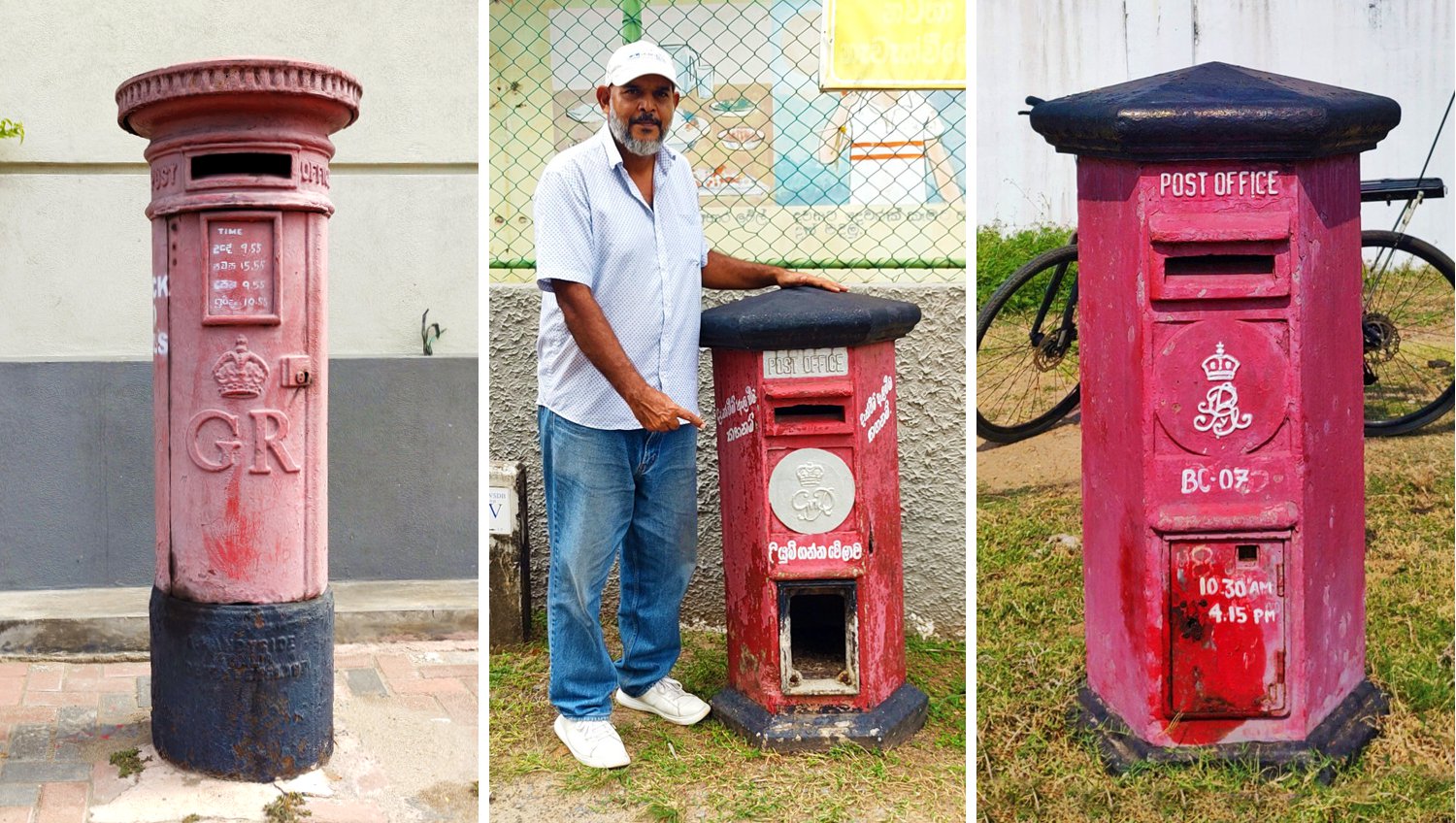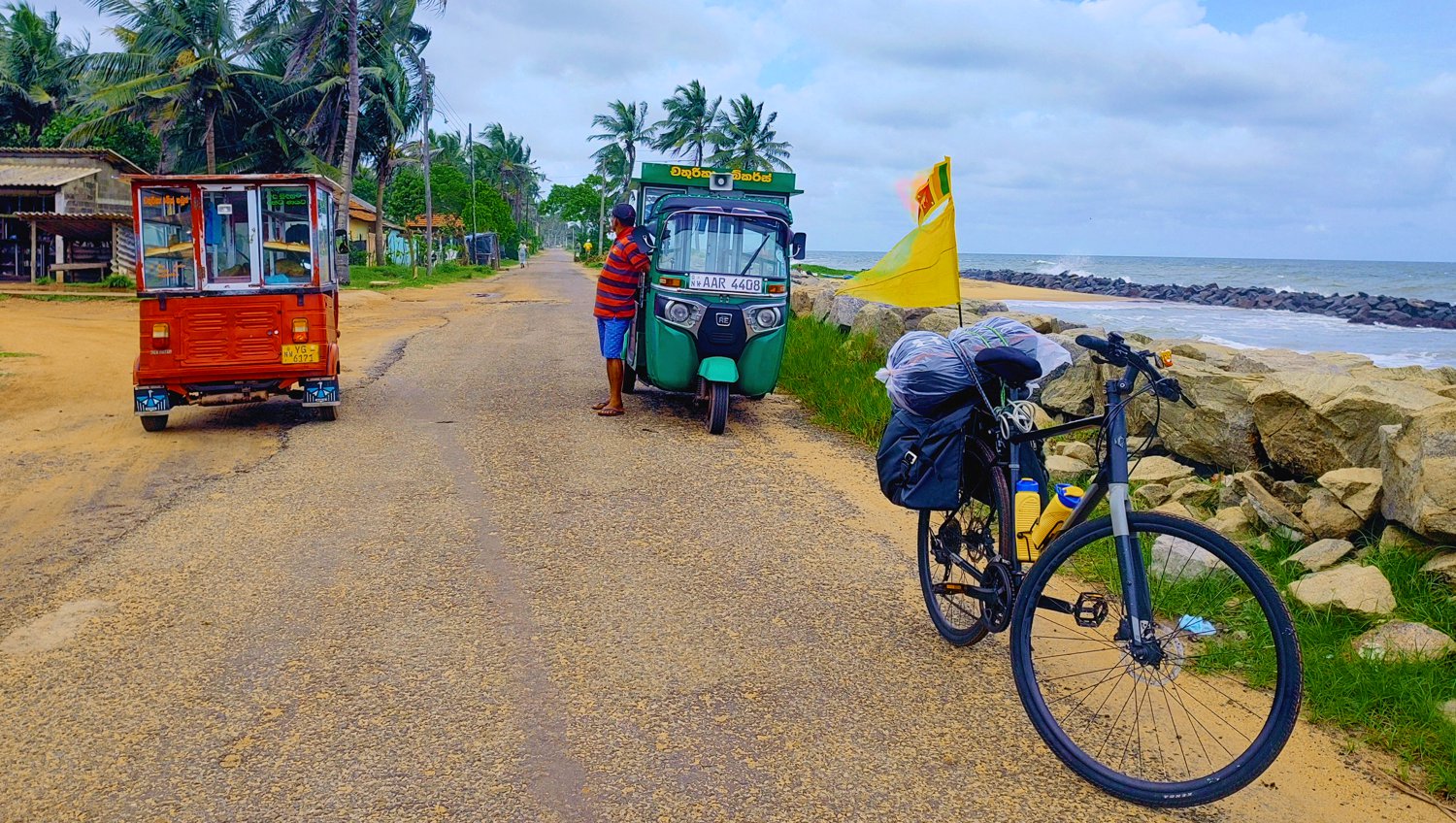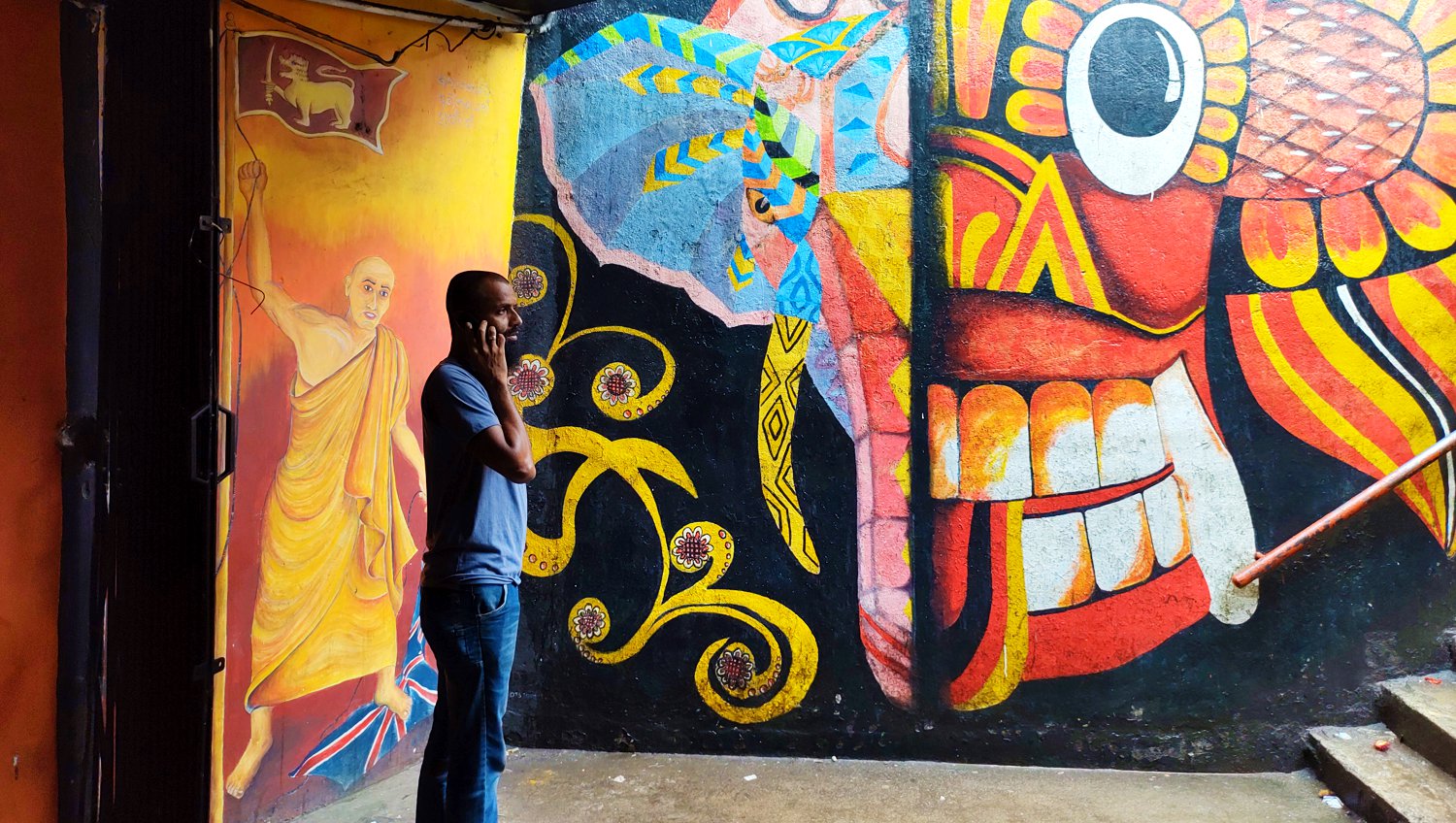On 13th May, during my time in Kalpitiya, I had a serendipitous encounter that led me to a captivating discovery. While photographing Volkswagen Beetles, I struck up a conversation with one of the car owners. It turned out that they hailed from different parts of Sri Lanka and were en route to St. Anne’s Shrine at Talawila.
As we chatted, I shared my Goan origins, and to my delight, he revealed that he was an alumnus of St. Jose Vas College in Wennappuwa. What intrigued me even more was when he shared that the road leading to the church, where his house in Bolawatta is located, was named after a Goan priest. I was disappointed to realize that I had already passed that road without noticing it, having already cycled about 100 km away. However, after completing an incredible 2200 km cycling trip around the Sri Lankan coast, I made the decision to return to Bolawatta and delve deeper into this Goan connection.
The Goan priest in question is Fr. Jacome Gonsalves, an extraordinary figure born on June 8, 1676, on the Island of Graca (Maddel) Chorao. He was the eldest son of Thomas Gonsalves and Mariana de Abreu. His journey from Goa to Sri Lanka as a missionary of the Congregation of Oratory of the Holy Miraculous Cross was truly awe-inspiring.
Fr. Gonsalves had a remarkable academic journey, starting with studies at Parochial School Divar, followed by enrollment at St. Paul’s College, a prestigious university in Old Goa, where he earned a Bachelor of Arts Degree. He furthered his education with theological studies at the Academy of St. Thomas Aquinas in Goa, where he also served as an organist, fostering a deep appreciation for poetry, prose, and music. Later, he joined the Oratorian Congregation of Goa and was ordained as a priest in April 1700 by Rt. Rev. Agostinho de Anunciacao, the Archbishop of Goa, at the Cathedral of St. Catharine. Before embarking on his journey to Sri Lanka, he briefly held the position of a philosophy chair at the University of St. Paul’s in Goa.
On 9 May 1705, he set sail for Sri Lanka, and upon arriving on 30 August in Talaimannar, Fr. Gonsalves immersed himself in learning Tamil and Sinhala. Through dedicated study of Tamil classics and guidance from learned Buddhist Bhikkus (Buddhist Monks or Devotees), he quickly mastered the languages. Despite being a foreigner, he was determined to create original works that resonated with the cultural traits of the country, significantly contributing to the Christian vocabulary of Sinhala and Tamil Catholics in Sri Lanka.
Fr. Gonsalves is credited with 22 books in Sinhala, 15 in Tamil, 4 in Portuguese, and 1 in Dutch. His celebrated works include “Deva Veda Puranaya,” which held a prominent place, and “Deva Neethi Visarjanaya,” impressing even King Narendrasinghe of Kandy with its account of the last judgment. “Suvisesha Visadyanaya” contained the Gospel for Sundays and feast days with commentary in the chanting style of Sinhala prose, which devout followers used to recite during the absence of Sunday Mass in churches.
Among his other contributions were “Dukprapthi Prasangaya,” a series of sermons to be chanted, and “Pasan” or lamentations, adding a poignant touch to religious observations during Lent, a tradition that continues in churches and homes to this day.
His work “Veda Kavya” showcased his brilliance in Sinhala poetry, exploring the creation of the world and the life of Christ. What set his works apart was the fusion of Christian themes with elements from Hindu mythology and Sinhala Maha Kavyas, presenting a splendid example of his literary prowess.
Fr. Gonsalves left a lasting impact on the people of Sri Lanka, earning the title of “Father of Catholic Literature in Sri Lanka” and playing a significant role in the establishment of the Catholic faith alongside Saint Jose Vaz. In 1717, he assumed the position of Vicar General of Sri Lanka, further solidifying his influence on the religious landscape.
His linguistic proficiency in Sinhala and Tamil earned him the esteemed moniker “Father of Catholic Literature in Sri Lanka,” a recognition of his extensive literary contributions. Through his authored books, prayers, hymns, and translations of Latin hymns into local languages, Fr. Jacome Gonsalves has left an enduring legacy that continues to resonate among Sinhala and Tamil Catholics to this day.
Fr. Gonsalves’ unwavering support for St. Joseph Vaz’s missionary work during the Dutch occupation, when Calvinism was imposed as the official religion after the Dutch victory over the Portuguese, underscored his commitment to spreading the Catholic faith. Devoting 36 years of his life to arduous missionary work, he peacefully passed away in Bolawatta, Negombo, on July 17, 1742. His mortal remains now find eternal rest at the Our Lady of Assumption Church.
Visiting the Our Lady of Assumption Church, where Fr. Jacome Gonsalves now rests in peace, holds profound significance for me. Not only do we share Goan heritage, but his former house lies just 150 meters away from my great-grandparents’ residence, making the connection even more meaningful.
Moreover, my brother’s wife, Glenda Miranda, is a direct descendant of Fr. Gonsalves’ family, making him her great-great-granduncle (though the exact number of generations remains uncertain).
During my visit, I had the privilege of meeting Ms. Souza, a resident near the church and a descendant of one of the 14 Goan families that migrated to Sri Lanka around the same time as Fr. Jacome (circa 1700). She mentioned that each year, many Goans visit the church during the feast, highlighting the enduring connection and heritage shared by those with Goan roots.
If you ever find yourself at the Our Lady of Piety Church in Piedade on the Divar Island, keep an eye out for the statue of Father Gonsalves, along with St. Joseph Vaz, in the church compound. These statues were erected in 2019 as a tribute to their beloved son of the soil. Additionally, the main road passing through the island leading up to the church was heartwarmingly named Fr. Jacome Gonsalves Road by the villagers on July 17, 2016. As a further testament to his legacy, his ancestral house, dating back four centuries, was donated to the diocese and is now the Our Lady of Divar High School.
This experience has deepened my appreciation for the historical ties and cultural legacy between Goa and Sri Lanka, serving as a testament to the enduring impact of individuals like Fr. Jacome Gonsalves on the cultural and religious fabric of both regions.
Read more:
https://en.m.wikipedia.org/wiki/Jacome_Gonsalves
https://www.heraldgoa.in/Cafe/279th-death-anniversary-of-Fr-Jacome-Gonsalves-A-Saint-in-waiting

